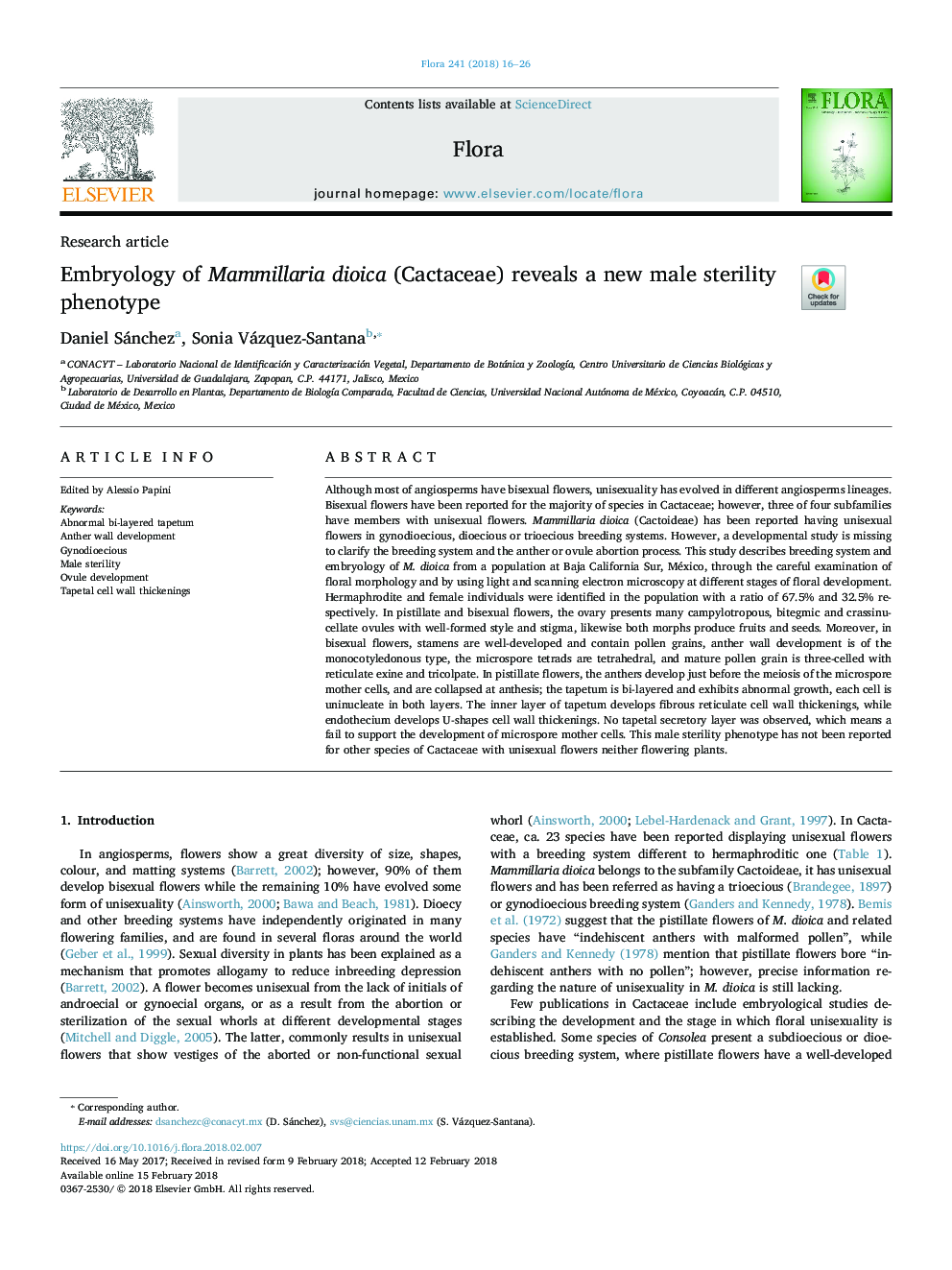| Article ID | Journal | Published Year | Pages | File Type |
|---|---|---|---|---|
| 8470167 | Flora - Morphology, Distribution, Functional Ecology of Plants | 2018 | 11 Pages |
Abstract
Although most of angiosperms have bisexual flowers, unisexuality has evolved in different angiosperms lineages. Bisexual flowers have been reported for the majority of species in Cactaceae; however, three of four subfamilies have members with unisexual flowers. Mammillaria dioica (Cactoideae) has been reported having unisexual flowers in gynodioecious, dioecious or trioecious breeding systems. However, a developmental study is missing to clarify the breeding system and the anther or ovule abortion process. This study describes breeding system and embryology of M. dioica from a population at Baja California Sur, México, through the careful examination of floral morphology and by using light and scanning electron microscopy at different stages of floral development. Hermaphrodite and female individuals were identified in the population with a ratio of 67.5% and 32.5% respectively. In pistillate and bisexual flowers, the ovary presents many campylotropous, bitegmic and crassinucellate ovules with well-formed style and stigma, likewise both morphs produce fruits and seeds. Moreover, in bisexual flowers, stamens are well-developed and contain pollen grains, anther wall development is of the monocotyledonous type, the microspore tetrads are tetrahedral, and mature pollen grain is three-celled with reticulate exine and tricolpate. In pistillate flowers, the anthers develop just before the meiosis of the microspore mother cells, and are collapsed at anthesis; the tapetum is bi-layered and exhibits abnormal growth, each cell is uninucleate in both layers. The inner layer of tapetum develops fibrous reticulate cell wall thickenings, while endothecium develops U-shapes cell wall thickenings. No tapetal secretory layer was observed, which means a fail to support the development of microspore mother cells. This male sterility phenotype has not been reported for other species of Cactaceae with unisexual flowers neither flowering plants.
Keywords
Related Topics
Life Sciences
Agricultural and Biological Sciences
Ecology, Evolution, Behavior and Systematics
Authors
Daniel Sánchez, Sonia Vázquez-Santana,
